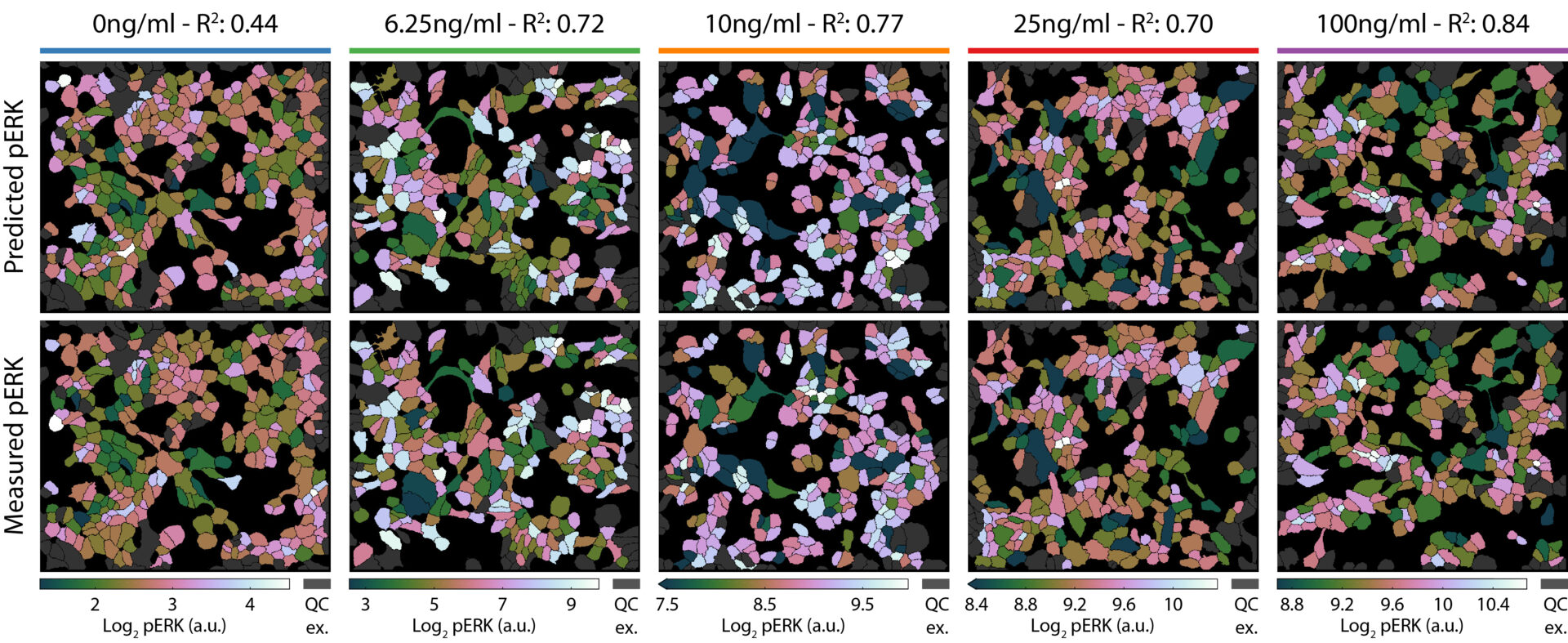Single-Cell Biology
How individual cells in multicellular organisms know which decisions to take, and ensure that the full diversity of cell types emerges reproducibly and in a robust manner is a fundamental question in biology. Our lab demonstrated that this is a property that cells from multicellular organisms also display in vitro, in which it manifests itself as heterogeneity in multi-scale cellular states, which drive variability in gene expression, signalling, endocytosis, and cell fate decisions.
Human epithelial cells grown for 48 hours display collective behaviour through which heterogeneity in local cell density emerges. Movie recorded by Prisca Liberali (2008).
Variation is information
Using scale-crossing imaging and computer vision, we discovered that the variation in properties of the cellular state across multiple scales, such as local cell crowding (a multicellular state), position in the cell cycle (a cellular state), or mitochondrial content (an intracellular state), contain a large amount of information about the propensity of individual cells to undergo a certain fate, such as becoming infected by a virus, or the amount of transcripts they express of a certain gene, rendering these outcomes highly predictive. This indicates that macro-scale properties reflected in the multi-scale cellular state are causal over their micro-scale components, such as gene activity, which is a defining property of emergence. Cell collectives generate this heterogeneity reproducibly through collective cell behaviour and self-organisation, and use it as a large source of information. We are currently highly interested in understanding how cells sense their multi-scale cellular state and transmit this large amount of information to precise adaptation of gene expression and cell fate decisions. For this we rely on high-throughput imaging combined with spatially resolved multiplexing using 4i and single-molecule FISH.

Projection of predicted (top) and measured (bottom) levels of pERK in individual 184A1 cells stimulated with varying concentrations of EGF. Image by Bernhard Kramer (2019).
Robust heterogeneity
If variation encodes information that is crucial for precise spatiotemporal decision-making, then cells must have ways to ensure this is robust to unwanted sources of variation, which inevitably arise through the probabilistic nature of molecular interactions. We have made pioneering discoveries that address this, such as a role for cellular compartmentalisation in buffering noise, and continue to study the principles and mechanisms by which mammalian cells are able to generate robust spatiotemporally controlled heterogeneity. Also, we are now applying our vision to tissues and whole organisms, with the aim to achieve comprehensive predictable models of spatiotemporal decision making by every cell in a developing embryo or organ.
Selected publications:
